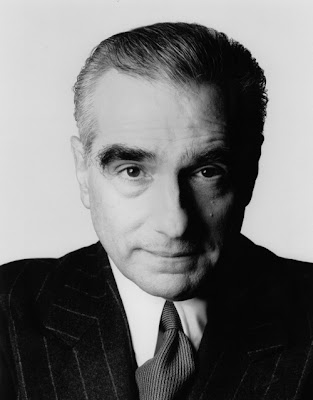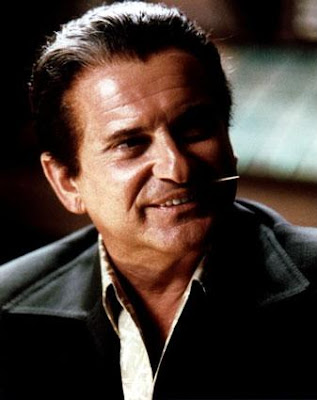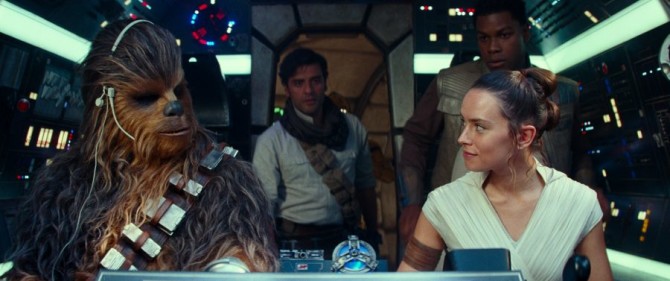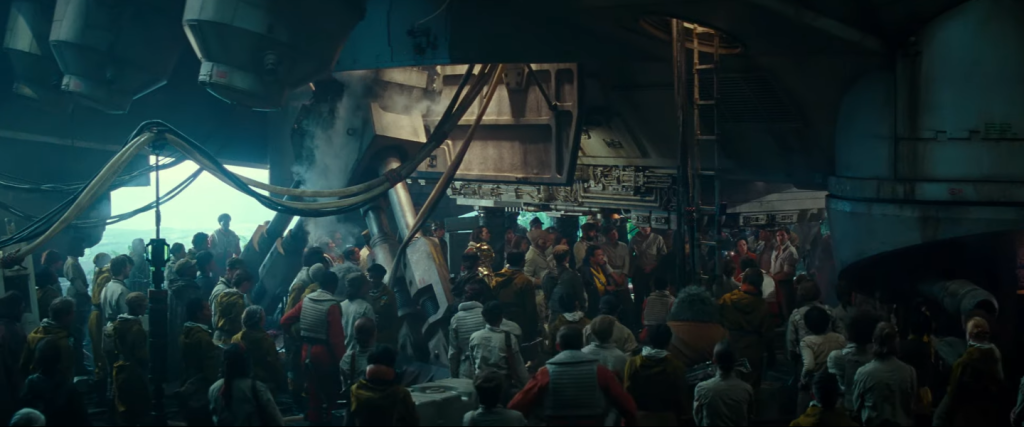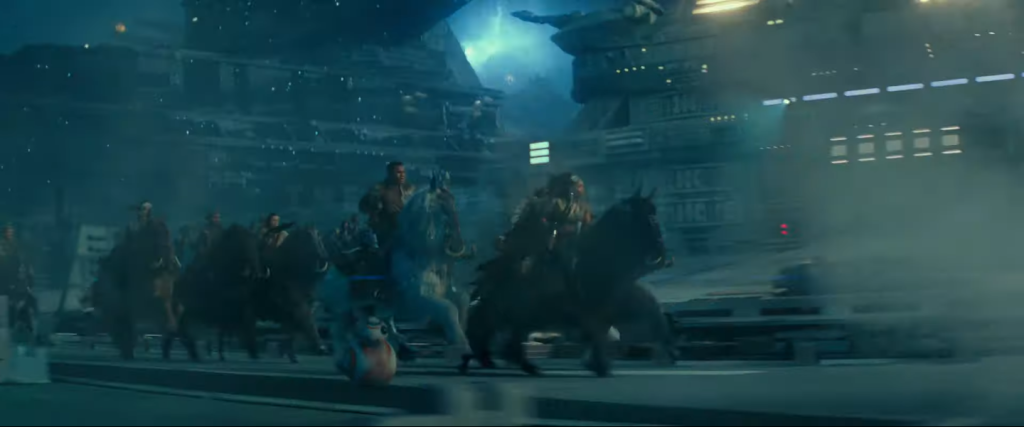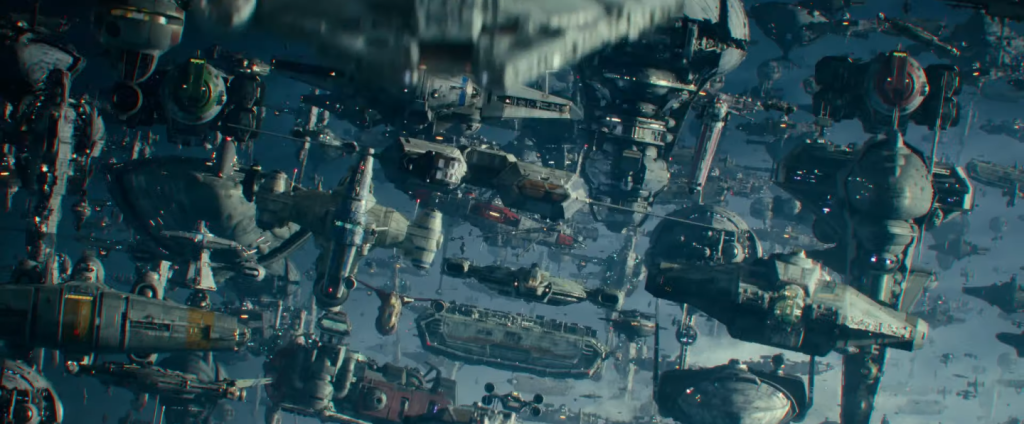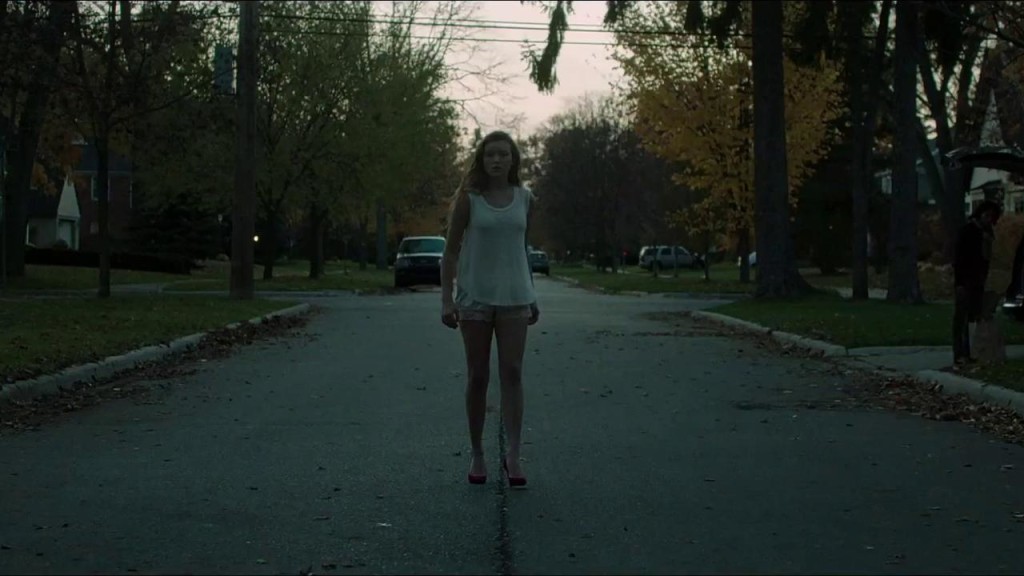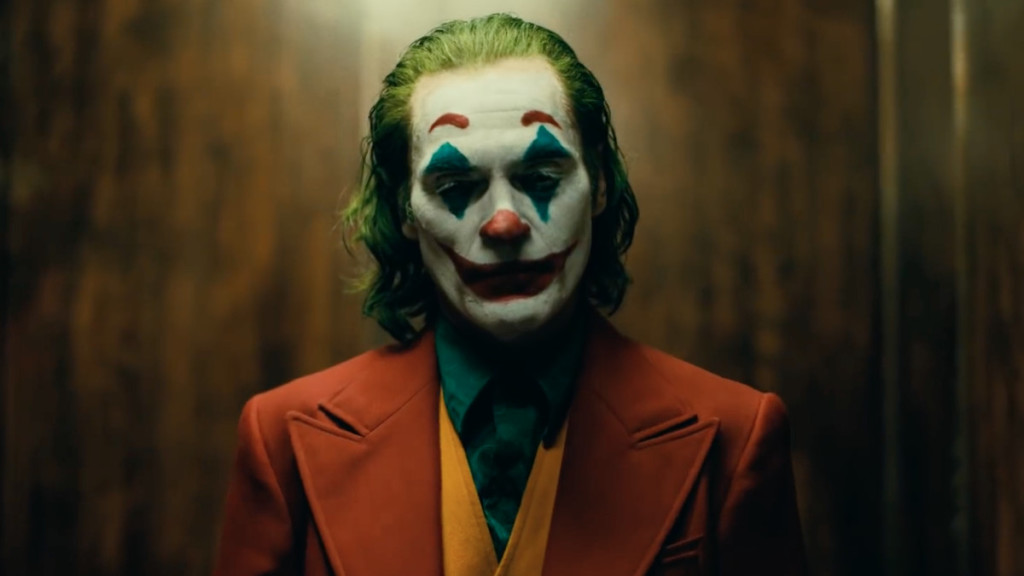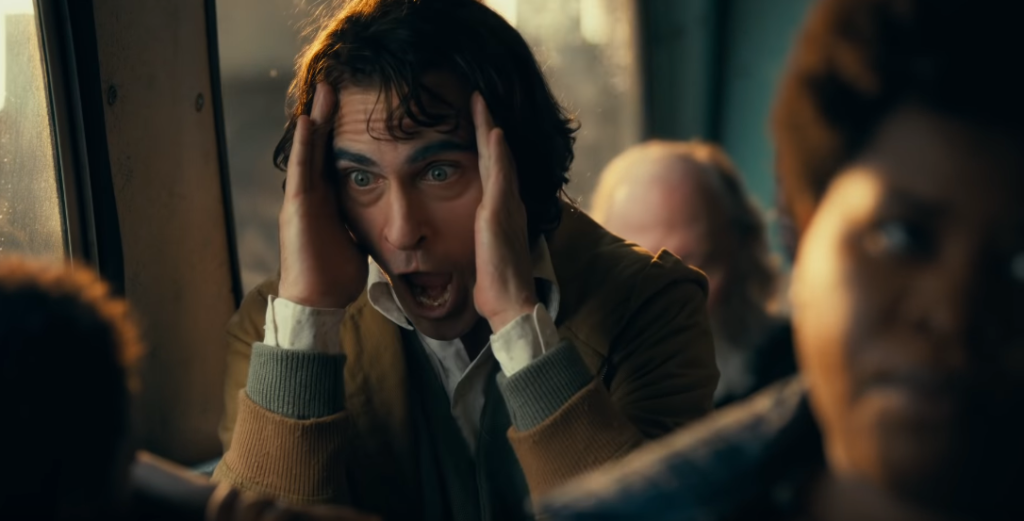Search Results for: the wall
With The Irishman just having come out on Netflix (I haven’t seen it yet – will check it out this weekend), here’s my review of the screenplay from a few years ago! Can’t wait to find out how it’s changed. Will probably do a script-to-screen on Tuesday.
Genre: Crime Drama Biopic
Premise: A mob hit man recalls his relationship with one of the most well-known mobsters in history.
About: “The Irishman” is based on the book “I Heard You Paint Houses” by Charles Brandt. It’s a hot project due to Martin Scorsese potentially directing the all-star team of De Niro, Pesci, and Pacino. Steven Zallian, who adapted the script, is one of the best writers working today. His credits include American Gangster, Gangs of New York, Mission: Impossible, Clear and Present Danger, and Searching For Bobby Fischer. Of course, he won the Oscar for Schindler’s List back in 1993.
Writer: Steven Zallian (based on aforementioned novel by Charles Brandt)
Details: 135 pages – Draft 1-5, Sept. 15, 2009
The Irishman is yet another Scorsese foray into the criminal underworld, this one taking place in a period he knows nothing about: the 70s. The story isn’t truly based in the 70s. Scorsese, lover of flashbacks that he is, actually flashes back inside his 70s flashback film to the 1950s, where the bulk of the plot takes place.
Our real life hero is an average guy named Frank. Frank tells us (in classic Scorsese voice over) how sucky it is having to kill people, particularly people you know. Due to the friendship, you must master a cadence by which they don’t suspect you’ll kill them. As soon as they suspect you, they’re capable of anything, and all bets are off. So stay calm, wait for them to turn their back, and bang bang. Problem solved.
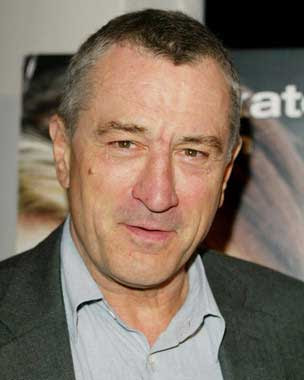
After explaining the art of the kill, we meet Frank’s good friend, Russell Bufalino. Bufalino wants Frank to join him on trip to an old friend’s wedding. Bufalino has some “business” to deal with along the way so he’d prefer to drive instead of fly.
Using this 1970s “present” as a framing device, Frank escorts us into an extended flashback where he tells us how he reached this moment in life. He first learned to kill back in World War 2. He was involved in a major standoff where Germans fired on him for 130 consecutive days. When the Allied forces finally surrounded the Germans, even though they surrendered, Frank shot every pleading German he could because of the hell they put him through.
After the war, Frank took a trucking job, immediately figuring out how to work the system. He’d steal steaks out of his own truck and sell them on the side. This led to him working for Russell Bufalino (the man he’s taking the road trip with in the 70s) who was one of the big heavies at the time. If you’ve seen Casino or Goodfellas, this portion of the screenplay will sound familiar, as passages are almost identical to famous passages from those films. “You wanted to bribe a judge, you asked Russell. You weren’t sure how much to give him, Russell would tell you. You wanted to up one of your guys, he’d tell you if you should. You wanted to get rid of someone – you needed Russell’s permission.”
Where the script really picks up is when Bufalino introduces Frank to Jimmy Hoffa. I had no idea this story was about Hoffa, so watching him show up was kind of like Justin Bieber showing up to your kid’s birthday party. Everything went up a level and all of a sudden it hit me: “Oh shit, we’re going to find out what happened to Jimmy Hoffa!” And indeed, that’s where the story goes.
For those who don’t know much about Hoffa (don’t feel bad – I didn’t know much myself), he became president of the biggest union in the United States and began lending out money to high class criminals from the union’s pension fund. This changed the face of America, as it infused mobsters with boatloads of cash, allowing them to organize crime in a way it had never been organized before. They say Vegas was built with this money.
Hoffa’s story is pretty fascinating (are you paying attention John Wilkes Booth?), so the entire second act is solidly entertaining. For example, Hoffa’s people donated tons of money to back JFK in the hopes that he would help them get back all the casinos they had built in Cuba, which Fidel Castro had claimed for himself once they severed ties with America. Incensed, Hoffa wanted JFK to kill Castro once he became president. Of course, as we all know, that didn’t go so well, and Cuba was lost forever.
In fact, the backing of JFK came back to haunt Hoffa. Kennedy’s brother Bobby HATED him and went after him relentlessly. Eventually, he caught Hoffa on tax evasion and he went to jail for 13 years. During this time, Hoffa wanted a place keeper union leader he’d be able to elbow out as soon as he finished his time. Unfortunately, the man who took his place became super-popular and wouldn’t let Hoffa back in. Hoffa’s insistence that he get that slot back eventually lost him a lot of friends and led to his downfall. Of course, we’re watching all this unfold through Frank’s eyes, and specifically his friendship with Hoffa, who considered Frank one of his closest confidants.
Overall, I really liked The Irishman. While I adore joking about Scorsese’s infatuation with flashbacks and voice overs, I thought they both worked well here. There’s something sorrowful about these old men, driving across Americana, tired, burnt out, brittle, contrasted against their prime, when they were both masters of the universe. The juxtaposition there was perfect. When you combined that with the larger-than-life character that was Jimmy Hoffa, someone I’ve always wanted to know more about, that’s what broke down the wall I usually put up when reading biopics. I mean this is a story that’s fun, interesting, mysterious, suspenseful, dramatic, inventive and challenging. I rarely see a couple of those things in a biopic, much less all of them. Maybe that’s because it isn’t your standard biopic, but that’s a discussion for another day.
My one major criticism of the story is the present day storyline. There just isn’t anything going on in it. They’re driving to a wedding. Every time we cut back to them, they’re still driving to a wedding. There’s no drama there. No conflict. Zallian seems to be using the 70s solely as a “Princess Bride” device – a way to jump forward in the 50s storyline whenever he needs to.
I actually thought the 70s storyline had a ton of potential. In the beginning of the movie, Frank tells us how difficult it is to kill someone you know, so I was sure that was in reference to him having to kill Bufalino. Had we been watching their friendship build over two hours back in the 50s, all the while anticipating Frank having to get rid of him at the end of the trip, that could’ve upped the suspense a hundred-fold. Or maybe we had it backwards, and Bufalino was going to kill Frank. And we’re sitting there wondering who’s going to kill who. It goes another way, and I think that way is ultimately interesting, but it definitely would’ve been nice to have something more going on here.
Where it really hurts the script though is in the final act, since we spend the entirety of that act in the present day. So little has happened in that storyline that it lacks the essential pulse that pushes a story to its ultimate conclusion. It’s hard to describe but those last 30 pages (and we are talking about a long script here, so that contributes to it) feel like the last 60 minutes of a long vacation. Your plane has landed, you’re barely able to stand, you’re waiting for your luggage, and all you want to do is get home and sleep. I’m not sure that’s the way this story should’ve ended.
But hey, on the whole, this was really enjoyable, especially the second act, which as we know is the hardest act to master. Of the four scripts I reviewed this week, I expected to enjoy this one the least, and it ended up being the best by a mile. So for that reason, it’s definitely worth the read.
[ ] What the hell did I just read?
[ ] wasn’t for me
[xx] worth the read
[ ] impressive
[ ] genius
What I learned: Never neglect a storyline. I see this a lot, particularly in this kind of setup where two storylines are going on and one of those storylines carries the bulk of the plot. It’s easy to say, “Well, the 70s storyline isn’t really that important so let’s just make it adequate.” But it’s always better if there’s something interesting going on in the lesser storyline. Even in The Princess Bride, there’s conflict in the Fred Savage/Grandpa storyline because Fred Savage is pretending like he doesn’t care or want to hear the story. That back and forth eventually leads to them becoming closer, giving that storyline a legitimate beginning, middle, and end just like the story he tells has a beginning, middle and end. So I’m by no means saying there needs to be shootouts or excessive fighting in the 70s storyline here – but it would be nice if it wasn’t so benign.
I’ve said it before and I’ll say it again.
This is the single most important Star Wars trailer of all time.
The Star Wars brand was destroyed in the hands of Rian Johnson. Everyone knows it now. Only a few Twitter users on an island try to make the case that it “wasn’t that bad.” Ever since The Last Jedi, the franchise has been stumbling. Solo bombed. An entire trilogy was canceled (Rian Johnson’s). Another one is close to being canceled (Benioff and Weiss). You’ve got Kevin Feige throwing around Star Wars ideas now, as if they’re so desperate for good press they’ll force their way-too-busy Marvel president to make a flick.
And that’s the thing. This trailer doesn’t just have to end the 9 film nerfology. It has to whet the appetite for Star Wars films moving forward. As much as we’ve heard Star Wars is eager to move away from the Skywalker Saga, the truth is, it’s still its best moneymaker. After this, you have to create all new iconic characters that people will want to watch through multiple movies. And if anybody thinks that’s easy, they’ve never written a screenplay before.
To achieve this feat, the Episode 9 trailer needed to be one of the most memorable trailers of all time. That’s not hyperbole. They’re hoping Rise of Skywalker will make 2 billion plus at the box office. To do that, you need to “Star Destroyer level” blow us away. You need to give us moments or shots where we seriously consider putting ourselves in an induced coma so we can get to opening day faster. Now that the trailer is FINALLY out, we have the answers we’ve been looking for.
How did it go?
First, let me share my immediate observations.
The opening shot with the training cap dropped is made to look like it’s Rey. I don’t think it’s Rey and I’ll leave it at that.
The choice of voice over is interesting. I’m not clear on who that is. Is it Poe? I’m sure everyone in the world will know by the time I post this so I’ll accept looking like an idiot. Still, the voice over had a crisper cleaner feel to it compared to previous voice overs, which I found refreshing. Anything to update this dusty franchise!
The first good shot is of the Resistance packed into a room with Lando at the center. I really liked that. Unfortunately, it was followed by an unnecessary shot of Rose which is only there because SJWs start whining on Twitter whenever the Star Wars brand doesn’t feature her.
Next we get the best shot of the trailer – when Kylo emerges from the water with his lightsaber. The shot is turbo-charged by the fact that he’s the only remaining character from the new trilogy who stirs up any emotion in us.
The Emperor segment where we see his chair and we see his ship rise from underground (or is that water?) is pretty cool. I’m into the Emperor returning. I know some people think it’s stupid but due to the Rianator killing off the big baddie in Episode 8 for all of 5 seconds of audience shock, JJ didn’t have a choice. I suppose you could’ve created a new villain. Or maybe matured Kylo into something way worse. But as long as his return makes sense, I’m down with it.
I liked the dolly shot of them running down the corridor. This is where JJ reminds me of a modern day Lucas. He still captures the essence of Star Wars, but adds something a little modern with that fast backwards dolly, a shot Lucas wouldn’t have thought of.
Space horses running on Star Destroyers. Hmmm… Not sure how I feel about this yet. I’d want to know more about the space horses. If you set up their properties as being specifically proficient for fighting in space, I suppose I could get into it. But you’re playing with fire cause if it goes wrong, you end up in Finn and Rose Tico territory where they’re racing those Harry Potter creatures into the wild.
I want to know what Rey and Kylo shatter into a million pieces. It looked like a Vader statue? I don’t know. But I want to know!
There are too many Star Destroyers and too many Rebel ships. When it becomes that many, they no longer seem important. And then, that over-the-shoulder Emperor shot is intriguing because it looks like some sort of mechanical device is moving him. Me like.
The final shot is Rey with her lightsaber and Luke and Leia saying “the force is with you.” Something tells me… and I’m totally guessing here. I don’t have any idea if this is true. That Rey might be a clone of Leia. But that would mean she’s a clone of Luke too, since they’re twins. Hmm… I don’t know. But I feel like we’re going to get one last big twist. If JJ is really going to pay homage to the franchise with this last film, he’d put a shocking personal twist in there somewhere. We’ll see.
So what did I think?
How do I put this.
The trailer isn’t bad. But it takes the wrong approach. This trailer needed to get us excited. Instead, it tried to tug at our heartstrings. C-3PO saying bye to his friends, for example – that moment is trying so hard to tease our tears. In theory, this is the right thing to do. If you can make people feel something, they’re more likely to hook than if you’re giving them a bunch of great shots.
But that assumes you have the emotional pieces to back that up. For emotion to work, it must be genuine. It can’t just be music and Star Wars shots. Case in point, the C-3PO shot I mentioned. He gets all emotional saying bye to his friends yet he doesn’t even know these people. He met them a few weeks ago. So the emotion is false.
JJ would’ve done better to put everything on the table. I heard somebody talking about how awesome it would be if the trailer showed the Emperor open up a lightsaber and then the camera pans over to see Luke Skywalker open up his lightsaber. I don’t think that’s in the movie. But those are the kinds of shots they needed to show here.
The reason we might not be getting them is because JJ doesn’t like to show anything past the first act in his trailers. He’s all about surprising the audience. So I think all this stuff happens in the first act (minus that Emperor shot). The rest of the film is being saved for the movie. Which means they’re overestimating our interest. People are not going into this with the same kind of enthusiasm they’ve had in the past. If anything, they’re going in skeptically. And so not using every single shot at your disposal is like throwing Lebron James in a game and telling him he can only shoot left-handed.
My biggest concern is that the trailer doesn’t have that WOW SHOT. A great trailer has to have that one shot that sells the movie all by itself. The moment Darth Maul opens up his two-sided lightsaber, for example.
This doesn’t have that. The trailer goes all in on Rey. And while Rey has some cachet as a Star Wars character, if you were to rank every Star Wars character in popularity, she’d be lucky to end up in the top 25.
I understand why JJ did this. It’s not like you can start over again. But one of the issues Rian Johnson was too ignorant to recognize was that when he made Rey a nobody, he took a character who was already average-at-best and made her even less interesting. If Rey’s not connected to this lineage, if she’s just some random outsider, why do we care what happens to her? This is the SKYWALKER SAGA.
There are Rian Truthers out there who will tell you, “It’s good that she’s a nobody,” and tout reasons like, “That means anybody can be a Jedi!” But every real Star Wars fan knows these people are wrong. You took a character who needed a PR makeover in the second film to offset the Mary Sue criticism, and you instead made her even less important. It’s kind of baffling, to be honest.
Now maybe JJ does make Rey’s lineage relevant to the story, slamming Johnson’s dumb idea into the wall and shattering it just like Johnson slammed JJ’s Kylo helmet into the wall to shatter it. If he can do that and it MAKES SENSE? I’ll be thrilled. But there’s nothing in this trailer that gives me hope this will be anything other than an average film. And you know what? Maybe that’s a good thing. Now I’ll go into the movie with super low expectations, which will make it easier to enjoy.
What did you think?
Genre: Horror
Premise: Two outcast teenagers have their world turned upside-down when they start receiving mysterious DVDs with horrifying imagery on them.
About: Today’s writer, Adam d’Alba, sold his spec pilot, “The Pierce Signal,” to Starz in 2015 (which may be a companion piece to this – I haven’t been able to confirm that). He then sold this script to Paramount in 2017, with spec-friendly 21 Laps producing. D’Alba graduated from Brown University and then worked in the ICM mail room. The Infinity Reel finished with 29 votes on the 2017 Hit List.
Writer: Adam D’Alba
Details: 105 pages
October is right around the corner and you know what that means. SCARRRRY TIIIIIME! Let’s get things started with an early bag of Halloween candy – an ode to The Ring…. but with DVDs!
30 year-old documentary filmmaker Jude Pierce is chilling in his apartment when his wife, Caroline, comes home holding a yellow envelope. While he works, she goes into the other room, opens the envelope, and finds a DVD. She plays the DVD, the contents of which we don’t see, takes the DVD out, then casually walks outside and throws herself over the railing, sending her to her death (the DVD, of course, breaks in the process).
Three months later, a haunted Jude is on a mission to find out what happened to his wife. There was a tragic story of a couple of high school kids he wants to look into. We’re not told exactly what happened to these kids, but we know they both received DVDs in the mail, just like Jude’s wife.
So Jude speaks to Nora, the mother of 18 year old Nick, and Ted and Sheryl, the parents of 18 year old Sarah. Nick is your classic goth type with no friends. And Sarah is an obsessive geek, determined to get into a top college, mostly at the behest of her parents. After Nick and Sarah both receive ominous DVDs, each with their own unique imagery, they meet and discuss what the DVDs could possibly mean.
We cut back and forth between Jude’s interviews with the parents and the growing relationship between Nick and Sarah, which we know has a horrible conclusion. We just don’t know what that conclusion is! Soon, new DVDs are showing up, and they’re not just showing terrifying imagery. They include footage of Nick and Sarah hanging out together. Whoever is doing this has been watching them.
But it gets oh so much worse. In one DVD, Nick and Sarah watch as they’re taped having sex. There’s only one problem. THEY HAVEN’T HAD SEX YET! This convinces Nick and Sarah that the DVDs are from the future, taping things that are yet to happen to them. But then it gets even CRAZIER! In one DVD they watch at school, they see an image of them, live, watching the DVD. But that’s impossible! This is a DVD. It’s already recorded.
But it gets even CRAZIER! One of the DVDs never ends. It just keeps going. For hours, days. But that’s impossible! A DVD can only hold a finite amount of information. Then things really take a turn for the worse, as Nick becomes possessed by the magic of the evil DVDs. One night when they’re alone, Nick takes out a gun, shoots Sarah, then shoots himself. The End.
Huh.
Well, okay. How should we dissect this one?
Look, one of the most important things to get right when you’re inventing a new mythology is the rules. The rules need to accomplish two things. They need to be clear. And they need to make sense. Which is why the mythologies that work best tend to be simple. That way, there isn’t a lot of room to mess up.
“It Follows” had a simple mythology. You pass on the curse through sex. And only the person cursed can see the person following them.
I can’t stress this enough. One of the fastest ways to lose a reader is to start throwing everything at the wall and hoping some of it sticks. Which is exactly how the rules in The Infinity Reel feel. At first you get a DVD and it makes you want to kill yourself right away. But then when our high schoolers get their DVDs, it’s different. They don’t want to kill themselves right away. Already the rules have changed and we’re not even out of the first act.
Then things get completely out of control. The DVD images go from random to including shots of the people watching the DVDs. Then it starts including things the characters haven’t done yet. So now we’re thinking the DVDs are from the future. Okay. But then, later, they realize that they might have been in a trance during their actions, and therefore the imagery is actually of stuff they’ve done in the past but forgotten. Then, the DVDs start including images that weren’t available at the time the DVD was recorded. So they’ve become magical DVDs, able to record after the fact. And then, to increase their magical ability, they contain never-ending video.
So here’s what goes on in my head when I read something like this: Writer is making up story as he goes along. He has no idea how he’s going to explain it in the end. But chances are he’s going to do what every writer who writes one of these scripts does once they’ve painted themselves into a corner – say that the characters were “going crazy” and so it was all in their heads. Which is pretty much what happens.
Look, there are a couple of ways you can go when you’re writing a mystery like this. Direction 1 is to make everything up as you go along and figure out the end when you get there. Direction 2 is to figure out the end first and then all of your story choices will be in service to that ending. Both directions have their advantages.
With the former, you can let your imagination go. Any wild idea you come up with, you can include it. When you do it this way, you end up finding exciting story avenues that you otherwise would’ve been afraid to try. With the latter, you’re going to have an incredibly focused story since every choice you make has to sync up with that ending you’ve already written.
But here’s the thing if you go with Direction 1. Once you come up with your ending, you’re going to have to go back and rewrite the s%&t out of your screenplay. Cause what’s going to happen is that most of those “out there” ideas you came up with no longer apply. And it’s probably going to take you 3-6 drafts of work before you get rid of all that junk and have something cohesive.
I didn’t see that here. Infinity Reel reads like Direction 1, but the writer only spent one quick draft cleaning up all the setups. Because nothing makes sense. How is the DVD able to go on forever? I know ideas sound great when it’s 3 am and you’re on your 17th Diet Coke and the juices of the caffeine are coalescing with early morning exhaustion and every wild idea that passes through your fingertips “feels right.” But it’s the duty of your next day self to bring some sanity to the situation and edit out all the nonsense. The nonsense never got edited out here which is why this script didn’t work.
[ ] What the hell did I just read?
[x] wasn’t for me
[ ] worth the read
[ ] impressive
[ ] genius
What I learned: Orient your reader when something big is going to happen later in a scene. This movie opens with a man on a computer, his wife coming home, watching a video, then going outside, then jumping to her death. There was only one problem. I had no idea they lived in a tall building. The writer didn’t tell me. So the moment she jumped was the first moment I knew they were up high. All the writer needed to do was to tell us this was a “High Rise Apartment Building,” as opposed to “an apartment,” and I would’ve had the visual necessary to make the scene work. — Screenwriters, never forget this advice: We don’t know unless you tell us!
Wait a minute, wait a minute, wait a minute. Can it be? Do we have ourselves a rare [x] impressive script? Or, oh my god, wait. Could this actually be BIGGER than impressive? Read today’s review to find out!
Genre: Comic Book/Drama
Premise: A comedian trying to make a name for himself in the 1980s finds himself inadvertently inspiring a movement to take down the rich.
About: When this project was first announced, it was met with collective skepticism. You’re going to create a second Joker in the DC universe? Won’t that be confusing? And while people were down for Joaquin Phoenix playing the Joker, they weren’t as sure about Hangover director, Todd Phillips, helming the flick. Cut to a year later and “Joker” is the leading contender for Best Movie of the Year and Best Actor of the Year. Just the other day, it won Best Film at the Venice Film Festival. Phillips teamed up with screenwriter Scott Silver to write the script. Silver is best known for writing 2010’s, “The Fighter.”
Writers: Todd Phillips & Scott Silver
Details: 120 pages
I was going to wait until this movie came out to review it. But it’s gotten so much love over the last couple of weeks that I couldn’t help myself. I had to read the script. It puts me in a unique position. Usually, when I read a script, the movie hasn’t even been made yet, much less shown to the public. This will be that rare exception where I’m reading something I know turned out great. Now despite Phillips saying this has nothing to do with the DC universe, there are a handful of story choices that tie this version of the Joker directly into the Batman mythology. So if you want to go into this fresh, you probably don’t want to read the summary. If you can’t help yourself, however, I’ll put a bolded spoiler tag around the big comic book-y spoiler. Okay, let’s get into it!
Here’s the first page:
This story takes place in its own universe. It has no connection to any of the DC films that have come before it.
We see it as a classic Warner Bros. movie. Gritty, intimate and oddly funny, the characters live in the real world and the stakes are personal.
Although it is never mentioned in the film, this story takes place in the past.
Let’s call it 1981.
It’s a troubled time. The crime rate in Gotham is at record highs. A garbage strike has crippled the city for the past six weeks. And the divide between the “haves” and the “have- nots” is palpable. Dreams are beyond reach, slipping into delusions.
40-something Arthur Fleck is living a rough life. He takes care of his ailing mother off his “Rent-A-Clown” salary. And both of them are on tons of expensive medication. Arthur’s most prominent medical condition is that he inadvertently laughs during serious moments. This makes it hard for him to connect with people because if someone, for example, tells him that their child just died, this will set off a raucous laughing fit from Arthur.
Meanwhile, Gotham is getting ugly. The trash collectors are on strike so there’s trash all over the city. And violence is skyrocketing. To the point where his co-worker gifts him a gun. “You gotta be able to protect yourself out there,” he tells him. Giving Arthur a gun turns out to be a bad idea. The next day, as Arthur does his clown schtick at a sick children’s hospital, his gun falls out of his pants mid-act. The horrifying incident gets him fired.
Arthur takes this as a sign to focus on what he really wants to do – which is become a comedian. But on the way home on the train, he’s harassed by some drunk Wall Street meanies. They push him and push him and push him until he finally pulls out the gun and shoots them all dead. He then runs out at the next stop, unknowingly beginning a movement. Kill the rich.
That night his mother, who used to work for Wayne Enterprises 30 years ago as a maid, hits him with a whammy. **spoiler** He’s the illegitimate son of Thomas Wayne (this is set up A LOT better than I was able to convey with limited space). **end spoiler** The next night he asks his lovely neighbor, Sophie – one of the few people who’s nice to him – if she’ll come see his act, which she agrees to. Arthur bombs horribly. It isn’t even that his jokes are bad. It’s that he doesn’t have any jokes. He just talks about random stuff.
Little does Arthur know that someone taped his act that night and sent it to Gotham’s number 1 talk show host, Murray Franklin. When they air Arthur’s act for Murray to make fun of, it gets so much attention that Murray asks Arthur on the show. Thrilled that the world is going to finally see his comedy act, Arthur meticulously prepares for his TV debut. Unfortunately, with both Gotham and Arthur’s mental state deteriorating rapidly, the person who appears on Murray’s show may not be the guy they saw on that tape. It may instead be… The Joker.
Can I just say that after the debacle that was yesterday’s sprawling nonsensical failure of a movie, It Chapter 2, how nice it was to get back to SIMPLE STORYTELLING. I’ll be honest, when I saw this trailer, I was afraid the script might be TOO SIMPLE. That they didn’t have enough story. But Silver and Phillips do an amazing job setting up 4 key characters for Arthur to interact with (his mom, Sophie, Murray, and one of his coworkers) and 4 main storylines (his murder of the Wall Streeters and it starting a Gotham movement, him trying to become Sophie’s boyfriend, his mom’s potential delusions with who he’s related to, and his desire to be a comedian).
One of the tricks with screenwriting is that if you know your characters well and you know your storylines well, you don’t need a whole lot else. You don’t need big twists. You don’t need asteroids heading towards earth. You can just cycle in and out of those storylines because they’re all compelling. One scene with mom, one with stand-up, one with Sophie, back to a scene with mom. Sometimes you’ll mix two together, like when he brings Sophie to his stand-up. And they were all good. We cared. We wanted, even though we knew the odds were a million to one, for him to get Sophie. We wanted to know if his mom’s story **spoiler** about Thomas Wayne was true **end spoiler**. We were horrified yet captivated whenever he practiced his comedy because he’s so weird and we know the chances of his success are less than 1%. And we loved that this tiny character piece actually connected Arthur to Gotham in a much larger way in that people started dressing as clowns and attacking the rich, making everything feel bigger, feel like it mattered.
And Arthur himself was so perfectly constructed. One of the hardest things about screenwriting is creating clear compelling characters. Often times a writer can create a crystal clear character, but they’re boring. Other times a writer can create a weird character with five different mannerisms and mental conditions and issues, but they’re unclear. And when a writer does get those two things right, you still have to give us a character we can root for, which is a challenge whenever you’re writing someone complex. It’s hard to combine all three of these things into a single character but Silver and Phillips did it. They immediately explain what Arthur’s condition is – that he laughs when he’s not supposed to. They make it very clear what his goal is – to become a famous comedian. And they do an amazing job building up sympathy for him right away. He gets beat up by a bunch of kids early on. And in a few subsequent scenes, everyone from his co-workers to his own mother put him down (“You want to be a comedian?” “Yes.” “But don’t you have to be funny to be a comedian?”). So we’re instantly rooting for this guy. Every aspiring screenwriter who wants to create a compelling main character needs to read this script.
And really that mastery of character extends to the story itself. There’s so much assuredness on the page of what they’re trying to do. Looking back at that great first trailer for Joker after reading the script, I can totally see why it’s so good. It’s because these guys knew EXACTLY what kind of movie they wanted to make. There’s no guessing here. That was the problem with yesterday’s script. You could see the writer and director trying to work out their story on the page. There’s so much indecision, from the jumping around in time to the never-ending short horror films to the story’s confusing rules (they remember their town but they also, um, don’t remember it?) to the clumsy execution of the never-ending climax. Joker is the antithesis of all of that. It is the culmination of simplicity and clarity. Unlike yesterday, where I was constantly asking, “Why are we in this room right now?” There’s never a moment like that in Joker. You always know where you are and why you’re there.
I honestly don’t know if I have a complaint about this script. I suppose if you’re a DC Comics geek, there are a couple of choices that will get you hot and bothered. But Phillips himself says this isn’t directly connected to the Batman mythology so I say have fun with it. I know I did.
[ ] What the hell did I just read?
[ ] wasn’t for me
[ ] worth the read
[xx] impressive
[ ] genius
What I learned: What I was most impressed by with this script is how the writers used some of the simplest most time-tested devices to get us to care. For example, having bullies beat up Arthur early on immediately puts us on his side. And here’s another technique you can use that’s a huge cheat but, for whatever reason, nobody picks up on on how much you’re cheating. Early on, put your character in a therapy session. What this does is it allows someone to ask your hero very personal questions and therefore we get to know him intimately quickly. Here, it’s not a therapist, it’s a social worker. But it’s the same device. And in a movie where it could be confusing to understand what makes this odd man tick, that scene got us into his head and helped us understand him immediately. This script is such a huge win for the power of simple time-tested storytelling techniques. I’m thrilled that it’s going to be celebrated all the way until March, when it will take home all the awards.
What I learned 2: Never write a character who’s “crazy.” Crazy is too general. It is undefined. Your character will be a huge failure if you try to write “crazy.” Arthur is just a guy who wants to connect with the world and doesn’t know how. Phillips and Silver also give him a laughing condition that adds another layer of complexity to the character. But that’s it. That’s all that’s going on here. And that’s a huge reason why this character works so well.
Genre: Thriller
Premise: (from Hit List) During an enormous wildfire, a fireman wrecked with guilt after the death of a colleague, searches for evacuees who have failed to leave their homes. But when he stumbles upon an isolated cabin, he makes a horrifying dis- covery — a young woman is being held captive inside – and he must now fight to get them both out of there alive before it’s too late.
About: Today’s writer used to be a sports journalist until he decided to place his head inside the guillotine known as screenwriting. Since then, he’s steadily moved his way up the ladder. He finished in the semi-finals of the Nicholl, got into writers room on the show “Helix,” and became a story editor on NBC’s “Manifest.” This script finished on last year’s Hit List with 16 votes
Writer: Bobak Esfarjani
Details: 91 pages
Fire scripts are all the rage these days! First Pyros and now this! Can somebody say “Fire Universe?” A forest fire pic. An in-depth true life adaptation of the Chicago Fire. A horror flick based on the Fyre Festival. A Firestarter sequel. A biopic on the first person to say, “Liar liar pants on fire” (I think that would be Jacob “Matches” Jones). Hey, we gotta find some way to compete with Marvel. Fight fire with fire. If this thing works out, you can move to water, air, ice – you name it.
I’ve always liked the idea of concepts set within the ticking time bomb that is a worsening fire. Yet nobody’s figured out how to do it right. There was that blink-and-you-miss-it Sam Jackson movie, Lakeview Terrace. But not much else. I can’t believe nobody’s written a recent movie on The Chicago Fire. I guess cows aren’t the most marketable villains. Anyway, grab your oven mitts and your smoke detectors. We’re about to find out if this latest fire flick burns down the house.
Firefighter Kyle is dealing with some massive PTSD. He believes it was his fault that his friend was killed in a recent fire. Kyle’s so distraught that even the biggest forest fire in California’s history can’t get him back up on the big red machine. When his small-town division is called in to help, Kyle stays back and cooks meals for his team’s return.
But when the fire takes an unexpected turn, people living up in the nearby hills will die unless Kyle helps evacuate them. So he drives around from home to home, yelling at people to evacuate. Kyle eventually stumbles upon a secluded cabin in the forest and knocks on the door. This is the home of Richard and Mary, two rednecks who have no desire to mingle with society. Oh, and they also have a secret. They’re keeping a 19 year old girl named Emily prisoner in a concrete room.
Kyle begins to get suspicious when Richard and Mary refuse to leave. Something doesn’t seem right. Then he hears a girl screaming. He charges into the house and finds the room, with a haggard Emily chained to the wall. Perhaps Kyle should’ve thought this plan through because pretty soon he’s whacked upside the head and wakes up in the room with Emily.
Meanwhile, Mary tells Richard they have to kill Kyle. But Richard thinks it’ll be too easy to trace Kyle here and they’ll get caught. Richard wants to kill Emily and get out of Dodge. But Mary has some strange obsession with Emily and refuses that option. This results in a stalemate and the two just stay in the house and do nothing – all while that raging fire gets closer. Back in the room, Kyle and Emily plan their escape. But bit by bit, he learns things about Emily that don’t add up, calling into question who the most dangerous person in this house really is.
A couple of weeks ago, I reviewed a contained thriller and preached the importance of evolving the plot. When you’re limited by geography, you have to have an “unlimited” plotting mindset. The story needs to twist and turn because we’re more likely to get bored when we’re in a stationary location.
Ashes starts out (spoilers) with our hero realizing that this family is keeping a girl prisoner. The first beat, then, is him trying to save her. This then evolves to him being stuck in the room with her. This leads to them scheming to escape. This evolves to them getting out into the house. This then evolves to ANOTHER firefighter arriving and helping them escape. This then evolves to Emily killing that firefighter, revealing the twist that she’s possessed. They were imprisoning her so she wouldn’t go into the world and kill people. This then evolves to Mary and Kyle working together to find her inside the fire-filled mountains.
I give Esfarjani a lot of credit. There wasn’t a single plotline that overstayed its welcome. We were always moving to the next stage.
But the big talking point with this script is obviously going to be the possession twist. Here’s the way I look at it. You get a maximum of two hooks per movie. The biggest forest fire in history forces a man to save a nearby family. That’s one hook. One of the houses he visits happens to have a couple who’s imprisoned a girl. That’s two hooks. The girl being a demon? That’s three hooks. Three hooks is where you get yourself in trouble.
It’s not that you can’t pull off three hooks. But it starts to look a little desperate from a reader’s perspective. You couldn’t keep us entertained with just two giant things going on, so you had to bring in one more? This can work IF the third hook is thematically connected to the story. But if it comes out of nowhere, you’re asking a lot of the audience. It would be like if in the third act of Godzilla, a superhero showed up. You’d be like, “Wait, so this is a superhero movie now?”
Having said that, screenwriting is an imperfect science. There’s no exact method for what an audience is willing to accept. Had you pitched me a movie about a guy realizing he was living inside a computer simulation and that once he freed their mind, he would fight everybody with kung-fu, I would’ve told you, “Thanks, but no thanks.” And Esfarjani leaves us enough breadcrumbs working up to the twist, that the possession makes sense. Which makes me think that maybe, just maybe, this could work.
The one big mistake Esfarjani makes is he doesn’t stay on top of the fire ticking time bomb. That’s the whole engine of the story, is that our hero is chained up in this room and a giant fire is coming. But nobody tells us how long it will be. At one point, I think two full days pass. It’s ridiculous. When you have a ticking time bomb – especially one as good as this – you need to keep updating your reader. The two captors need to have conversations like, “How long do we have?” “I don’t know. Maybe five hours?” Or heck, ask Kyle! He’s the expert on this stuff. Since I was never clear on when the fire would get here, I didn’t feel as much tension as I should’ve.
But this was a breezy read. It was a very good representation of what a spec script should be. 90 pages. Simple concept. Just a few characters. It’s easy for the reader to grasp what’s going on. I see so many specs die within ten pages because an overly complicated plot has been set up. Save those overly complicated plots for when you become a known writer. In the meantime, write for exhausted grouchy readers who don’t want to read another lame amateur script. Big simple concepts are your best bet at roping them in.
[ ] What the hell did I just read?
[ ] wasn’t for me
[x] worth the read
[ ] impressive
[ ] genius
What I learned: Don’t expect your ticking time bomb to do the work for you. If the time allotted on your “bomb” isn’t clear, it will be up to you to periodically tell your audience how much time is left. How am I suppose to know how much time there was before this fire reached their house? One of the oldest screenwriting rules is apropos here – “We don’t know what you don’t tell us.”

